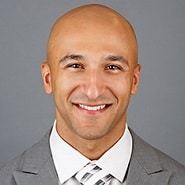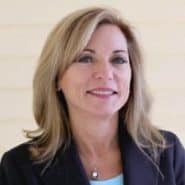
Dave Lehr, CIO, Anne Arundel Health System

Patty Lavely, SVP & CIO, Gwinnett Health System
It started nearly two years ago at the Fall Forum in San Antonio, Texas, with a call to action. In response to the death of Tim Kopetsky, son of longtime CHIME member Ed Kopetsky, from an accidental overdose, Jim Turnbull, CIO of University of Utah Health System, and CHIME CEO Russ Branzell announced the creation of an Opioid Task Force. As Turnbull told the audience, it was his close friend’s wish that CHIME do everything possible to help other families avoid the pain his had suffered.
Although most initiatives take time to get off the ground, this wasn’t your typical program. It was – and is – an opportunity to leverage the knowledge and experience of leaders from organizations across the country to make an impact by increasing awareness, sharing best practices, and advocating for policy change.
And the momentum has only continued to build. Last month, the CHIME Opioid Task Force published a playbook featuring real-world examples of how organizations have used IT to reduce unnecessary opioid prescriptions. Next up is an Action Center that will provide updates, and more education. The only thing that isn’t planned is to stop.
Recently, healthsystemCIO spoke with Dave Lehr, CIO at Anne Arundel Medical Center, and Patty Lavely, CIO at Gwinnett Health System, who joined Kopetsky as co-chairs earlier this year after Turnbull stepped down, about the work the Task Force is doing, why they became involved, and what they’ve learned so far.
Hi Patty and Dave, thank you so much for taking the time to talk about the very important work you’re doing as co-chairs of the CHIME Opioid Task Force. Despite being launched just a year and a half ago, the initiative has made significant leaps. Can you talk about what the experience has been like so far?
Lehr: It’s been really interesting to be part of the group and watch it evolve. It’s not one of those things where you sign up and maybe meet once or twice a year. We’re really active. In fact, while we were building the playbook, each of the chapters were meeting weekly as a group to build their chapters, interview people, and establish best practices.
What was it that made you want to get involved in this initiative?
Lavely: This epidemic is affecting so many people. It’s in my family. It’s in my friend network. It’s in my business network. It’s everywhere you look, and too many people are dying. That’s the bottom line.
The way the Task Force is set up, there are two primary tracks: education and advocacy. How does that work in terms of governance – does each of you head up one area?
Lavlely: When we stepped into the co-chair roles, subcommittees were developed. I’m assigned to education and Dave heads up the public policy subcommittee.
Both of the pillars are very important. Even as we’ve gone through this, interoperability has become a lot more ubiquitous for things like prescription drug monitoring programs. The Opioid Task Force spoke at last year’s CHIME Advocacy Summit in Washington about the importance of interoperability, standards and regulations that work between states, e-prescribing, and prescription drug monitoring programs that can integrate with the EMR and not be a burden.
Those were the initial things we focused on from that standpoint, as well as parity between the regulations of HIPAA and 42 CFR part 2. If a patient is receiving behavioral health and substance abuse treatment, we feel that the entire medical team should be aware of that and should have the information they need to make the best decisions about a patient’s care.
Let’s talk about the Playbook, which aims to provide a framework for system-wide initiatives to reduce unnecessary prescriptions. Talk about how this came about.
Lehr: At HIMSS18, just after the group was formed, we got together and realized we had all these CIOs who are really passionate about ending this crisis and educating people on how they can take some steps to make a difference.
When we thought about how we could make an impact, we talked about the successes some health systems were having in this area. As we got into the weeds of the most advanced things organizations were doing, we realized it can be really daunting to the average health system or community hospital that has a thousand other things going on. They don’t necessarily have the resources to take on something as complex as what some of the large systems are doing.
And so we said, let’s come up with recommendations that any health system can do. Every health system that was able to implement an EHR should be able to do these things to encourage better stewardship of opioid prescribing. That led to the development of the playbook.
I’m sure it can be really intimidating for smaller hospitals to seeing what Geisinger is doing and think, ‘that’s out of our reach.’
Lavely: It is, but if you what Geisinger did, one of the initiatives was not that complex. They reviewed all their order sets to determine what the default opioid orders were, and whether they should be modified them. When they did modify them to be more in line with what are now the CDC standards, they cut opioid prescribing by 50 or 60 percent. We were able to highlight that initiative in the playbook to say, ‘this is something we can all do.’
Lehr: Anne Arundel did something similar. And that might be the single most impactful thing we’ve seen across every organization we’ve interviewed. People are doing really complex things – standing up special Hadoop clusters just to analyze certain parts of this information. But what’s making the biggest difference are simple things like reviewing your order sets.
Lavely: Another example is connecting the prescription drug database to the EHR so it’s incorporated into the workflow. Again, something basic that you can work with your vendor to do.
Another area is patient education. We talked with one organization that makes it a point to educate surgical patients at every touch point, pre and post-surgical event. They’re getting education on everything from the risks of taking opioids to how to dispose of them when you’re finished, through methods like video, documentation, and teach-back skills.
What do you see as the next steps for the Task Force?
Lehr: The playbook isn’t done; we’ll continue to update it as a living document to reflect changes in best practices and recommendations. But going forward, our focus will shift from writing and maintaining the playbook, to supporting the Opioid Task Force Action Center, which is a website that will contain an information feed. This way, as new research is released and members of the Task Force share stories, uses cases, successes and lessons learned, those things can be added in a more real-time and bite-sized fashion.
Lavely: The Action Center is designed to be the go-to place for all healthcare professionals and leaders, not just CHIME members. We have quite a few active physicians in the Task Force. I see the Action Center as a way to get the expertise of leaders from around the country around how they’re addressing the opioid epidemic.
How do you think the Task Force been able to come out of the gate and make an impact in such a short time? What has been the key to that?
Lavely: A big part of it, I would say, is the inspiration of the call to action, and of course, Ed’s personal story. I think that really tugged at people. And as CIOs, we’re in a unique position to help, because we’re always convening the leaders in our organizations around different efforts. We’re one of the few departments that really supports the organization globally. Our strategy is global. It’s not just focused on technology; it’s how does technology enable the business of healthcare.
Lehr: I completely agree. At some point every initiative plugs into IT, whether it’s a new building, an opioid stewardship committee, or readmission reduction initiative. Whatever it is, IT is supporting it every step of the way. And so it made sense for us to advocate for the successes at other organizations and help other CIOs to create their own opioid stewardship committees and give them the resources they need to make it a success.
Everyone who’s part of the Task Force has, at some point in their career, wished for a playbook to help guide them. We feel a responsibility to do that for our counterparts.
What were some of the key challenges in developing the playbook?
Lehr: The logistics of herding a bunch of CIOs and physicians together to accomplish something wasn’t without its challenges. But what happened was leaders emerged and took the reins to make sure the work was going forward.
I will also say that the CHIME staff was indispensable through this process. They supported us at every turn; we wouldn’t have been able to accomplish it without them.
Lavely: Absolutely. They made sure we met consistently and helped keep the group moving forward. Although they didn’t do the initial writing, they did all the editing to make sure it made sense and was standardized across the eight chapters. Candace [Stuart] was absolutely instrumental.
What was it that appealed to you about the Task Force?
Lehr: As Patty said, everyone has been touched by this in their communities and in their personal lives. Here in Maryland, we’ve seen significant spikes in opioid deaths, and I wanted to be part of the solution.
When I first heard CHIME was forming an Opioid Task Force, Anne Arundel was actually a few months ahead of where most organizations were at that time. I emailed Ed Kopetsky about the improvements we had made with our dashboard, and told him I wanted to help other organizations around the country do the same.
It’s interesting, organizations invest a lot of time and funds on leadership training initiatives. But being involved in a real, urgent problem, and working with the caliber of CIOs and leaders that have been on the Task Force, has been some of the best professional development anyone could’ve hoped for. Because you’re not just hoping these leaders will say something really valuable in the course of a presentation, you’re getting to see how all these different people operate when they’re working on real problems.
So I’ve been thankful for the professional development opportunity as well.
It sounds like it’s been a great experience. Thank you both for your time, and for the work you’re doing, and I look forward to speaking again soon.
healthsystemCIO’s Interviews and Podcasts are sponsored by:



Share Your Thoughts
You must be logged in to post a comment.